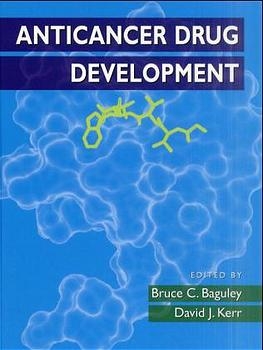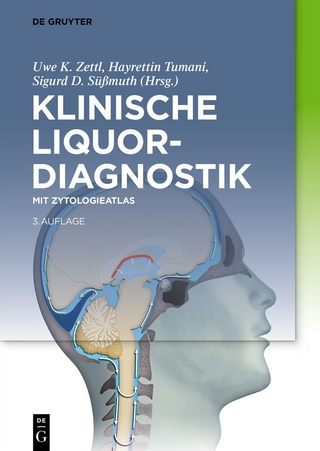
Anticancer Drug Development
Academic Press Inc (Verlag)
978-0-12-072651-6 (ISBN)
Here in a single source is a complete spectrum of ideas on the development of new anticancer drugs. Containing concise reviews of multidisciplinary fields of research, this book offers a wealth of ideas on current and future molecular targets for drug design, including signal transduction, the cell division cycle, and programmed cell death. Detailed descriptions of sources for new drugs and methods for testing and clinical trial design are also provided.
Edited by Bruce C. Baguley and David J. Kerr
Contributors
Preface
Chapter 1 A Brief History of Cancer Chemotherapy
Summary
1. Introduction
2. Genotoxic (Cytotoxic) Therapy
3. Growth Control Pathways
4. Host–Tumor Interactions
5. Conclusions
References
Chapter 2 Novel Targets in the Cell Cycle and Cell Cycle Checkpoints
Summary
1. Introduction
2. Molecular Regulation of Cell Cycle Progression
3. Molecular Regulation of Cell Cycle Checkpoints
4. Rationale for Targeting Cyclin-Dependent Kinases and Cell Cycle Checkpoint Pathways
5. Agents and Strategies for Therapeutic Interference
6. Conclusions
References
Chapter 3 Growth Factor and Signal Transduction Targets for Cancer Therapy
Summary
1. Introduction
2. The ErbB Family of Receptor Tyrosine Kinases (RTKs)
3. The Ras-Raf-MEK-ERK Signaling Pathway
4. c-Src Kinase, Signal Transduction, Transformation, and Cancer
5. Akt
6. Nuclear Hormone Receptors as Targets for Cancer Therapy
7. Implications for Drug Discovery and Development
References
Chapter 4 Cell Death Pathways as Targets for Anticancer Drugs
Summary
1. Introduction
2. Two Main Pathways for Drug-Induced Apoptosis
3. Modulation of Drug-Induced Cell Death by Bcl-2 and Related Proteins
4. The Central Role of Caspases in Drug-Induced Apoptosis
5. Synergy between Death Receptors and Cytotoxic Drugs
6. The Rel/NF-kB/IkB Proteins
7. Conclusion
References
Chapter 5 Drug Resistance Pathways as Targets
Summary
1. Introduction
2. Targeting Drug Transport
3. Targeting Cellular Stress Responses
4. Targeting DNA Repair Systems
5. Conclusions
References
Chapter 6 Role of Matrix Metalloproteinases and Plasminogen Activators in Cancer Invasion and Metastasis: Therapeutic Strategies
Summary
1. Introduction
2. The Extracellular Matrix
3. Cancer Invasion and Metastasis
4. Cell Adhesion in Cancer
5. Cancer Cell Motility
6. Inflammatory Response to Cancer
7. Proteolytic Enzymes Implicated in Cancer Invasion
8. MMPIs as Novel Anticancer Agents
9. Sheddases
10. The uPA System: Proteolytic Control of MMP Activation
References
Chapter 7 Tumor Vasculature as a Target
Summary
1. Introduction
2. How to Inhibit Tumor Angiogenesis
3. Concluding Remarks
References
Chapter 8 Gene-Directed Enzyme Prodrug Therapy
Summary
1. Introduction
2. Background
3. Enzyme-Prodrug Systems
4. Tailored Prodrugs for GDEPT
5. The Activation Process
6. Augmenting the Effect
7. Exploiting the Bystander Effect and Acquired Immunity
8. Conclusions
References
Chapter 9 Tumor Antigens as Targets for Anticancer Drug Development
Summary
1. Introduction
2. Antigen Targets for Cancer Vaccines
3. Tumor Antigens as Targets for Antibody-Based Therapeutics
References
Chapter 10 Structure-Based Drug Design and its Contributions to Cancer Chemotherapy
Summary
1. Introduction
2. Antimetabolites
3. Protease Inhibitors
4. Protein Kinase Inhibitors
5. Other Targets
6. Novel Methods in Structure-Based Drug Design
7. Conclusions and Current Questions
References
Chapter 11 The Contribution of Synthetic Organic Chemistry to Anticancer Drug Development
Summary
1. Introduction
2. Early Rationality
3. The Random Screening Era: Directly from Screen to Clinic
4. Organic Synthesis Catches Up: Development of National Product Leads
5. Development of Synthetic Compounds: Structure–Activity Relationships
6. Immunotoxins: Synthetic Organic Chemistry Applied to Large Molecules
7. Organic Synthesis in Rational Design: Tumor-Activated Prodrugs of Cytokines
8. Early Genomics: Inhibitors of Transmembrane Tyrosine Kinases
9. The Genomics/Proteomics Era: Combinatorial Chemistry
10. Conclusion
References
Chapter 12 Biosynthetic Products for Anticancer Drug Design and Treatment: The Bryostatins
Summary
1. Introduction
2. Background to the Bryostatins
3. Comprehensive Review of Bryostatin Scientific and Medical Reports
References
Chapter 13 DNA-Encoded Peptide Libraries and Drug Discovery
Summary
1. Introduction
2. Methods for DNA-Encoded Peptide Display
3. Applications for DNA-Encoded Peptide Libraries
4. Conclusions
References
Chapter Mechanism-Based Highthroughput Screening for Novel Anticancer Drug Discovery
Summary
1. Importance of Mechanism-Based Targets in Postgenomic Drug Discovery
2. High-Throughput Screening
3. Assay Technologies
4. Assay Performance and Downstream Evaluation of Bits
5. Compounds for HTS
6. Examples of Compounds Identified Through Screening Approaches
7. Future HTS Developments
8. Concluding Remarks
References
Chapter 15 Tumor Cell Cultures in Drug Development
Summary
1. Introduction
2. Growth Inhibition Assays
3. Clonogenic Assays
4. Three-Dimensional Cell Cultures: Modeling Extravascular Drug Transport
5. Modeling of in Vivo Activity by in Vitro Assays
6. Perspective
References
Chapter 16 Screening Using Animal Systems
Summary
1. Introduction
2. Choice of in Vivo Systems for Large-Scale Drug Development
3. Combined in Vitro/in Vivo Testing Procedure Using Human Tumor Xenografts—The Freiburg Experience
4. Use of Transgenic Animals in the Search for New Drugs
5. Screening for Angiogenesis Inhibitors
References
Chapter 17 Relevance of Preclinical Pharmacology and Toxicology to Phase I Trial Extrapolation Techniques: Elevance of Animal Toxicology
Summary
1. Introduction
2. Historical Perspective
3. Special Toxicity Evaluations
4. Recent Examples of Drug Development at NCI
5. Predictability of Nonclinical Animal Data
6. Conclusions
References
Chapter 18 Clinical Trial Design: Incorporation of Pharmacokinetic, Pharmacodynamic, and Pharmacogenetic Principles
Summary
1. Introduction
2. Rationale for Chemotherapy Optimization
3. Pharmacokinetic–Pharmacodynamic Relationships
4. Pharmacogenetics
5. Strategies to Improve Therapeutic Index
6. Conclusion and Perspectives
References
Chapter 19 Tumor Imaging Applications in the Testing of New Drugs
Summary
1. Introduction
2. Positron Emission Tomography
3. PET in New Drug Evaluation
4. Conclusions
References
Chapter 20 Mechanistic Approaches to Phase I Clinical Trials
Summary
1. Introduction
2. Mechanism-Based Studies of Established Anticancer Agents to Assess Target Inhibition
3. Mechanistic Trial Perspectives on Anticancer Agents with Novel Mechanisms
4. Potential of PET Scanning in the Assessment of Pharmacodynamic End Points
5. Conclusion
References
Index
| Erscheint lt. Verlag | 17.11.2001 |
|---|---|
| Verlagsort | San Diego |
| Sprache | englisch |
| Maße | 216 x 279 mm |
| Gewicht | 1180 g |
| Themenwelt | Medizin / Pharmazie ► Medizinische Fachgebiete ► Laboratoriumsmedizin |
| Medizin / Pharmazie ► Medizinische Fachgebiete ► Onkologie | |
| Medizin / Pharmazie ► Medizinische Fachgebiete ► Pharmakologie / Pharmakotherapie | |
| ISBN-10 | 0-12-072651-3 / 0120726513 |
| ISBN-13 | 978-0-12-072651-6 / 9780120726516 |
| Zustand | Neuware |
| Haben Sie eine Frage zum Produkt? |
aus dem Bereich


